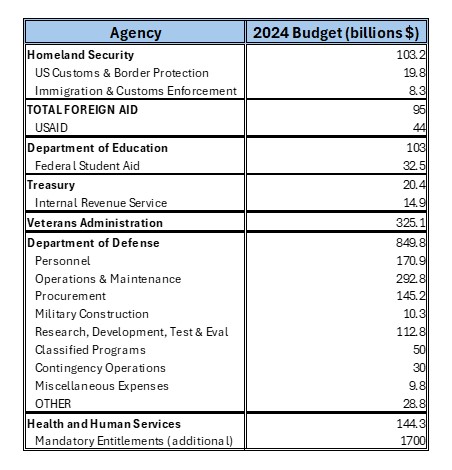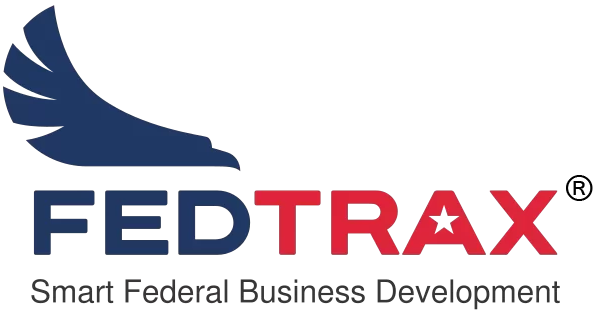
The Federal budget is under the microscope as you are no doubt aware, and information warfare to win public opinion and not only tolerate but demand change is the strategy that the Trump administration is using. Elon Musk is cannonballing into the Federal pool (thanks Clay) at the assisted living facility with DOGE swim trunks, and senior employee sunbathers are getting splashed.
This article is simply to outline what I see is the strategy toward implementation of budget cuts based upon early returns. The Trump administration has a good deal of public sentiment capital it is drawing upon right now, and it wants to keep or increase it. It goes without saying that many of these executive orders (EOs) that are being implemented to this end will be legally challenged, halted by one judge or another, and require congressional action to cement into laws so they won’t simply be reversed by the next democrat president. There are tons of others out there spending countless hours on that topic, so I’ll keep the focus on the information warfare taking place.
Information Warfare to Garner Public Support
Budget cuts sound really cool. I’d bet upward of 75% of America believes that the Federal government needs a haircut in some way or another. The challenge is, individual perceptions can change when the barber is running in your direction with the clippers set to ‘high’.
The new administration knows it needs to find low hanging fruit on the fraud, waste and abuse tree that will have huge public support behind plucking. Since the campaign and the man have focused on the America First agenda the past nine years, shining the light on questionable expenses directed outside the continental US (OCONUS for you DoD types) is the first information warfare bullet fired. Enter USAID. Revealing what many would consider to be fringe expenses in the USAID budget is the first step to hardening the public for the budget cut mission that lies ahead.
Another thing we have seen is the immediate cessation of any program falling into the DEI (diversity, equity and inclusion) bucket. Since all Federal agencies have been spending money on those activities the past four years (at least), this was another easy information warfare target where savings can be shown.
I love football and so does Trump, and clearly the adage of “The best defense is a good offense” is a lesson learned from 45’s administration. From 2016 to 2020, DJT was under assault from the jump and was limited as to what he could implement because he was always on defense. DJT 47 is pumping out EOs so fast now that his adversaries are continually trying to just keep up, much less mount an effective information warfare response.
The Tools of DOGE Information Warfare
Budget Parsing
The most obvious weapon that the administration is using here is highlighting budgetary information, albeit selectively, that demonstrates the points needed to keep the public hungry for more. Here is an example. Thanks to my handy dandy CoPilot, I was able to assemble numbers from the 2024 Federal budget fairly easily that show areas that DOGE will likely focus on for cuts.

This table is not complete, showing subcategories inside major budget categories for effect. So what can we notice?
- Immigration and border enforcement is a flashpoint issue in America. It got DJT elected twice in 3 elections. Notice how the 2 key agencies that control border enforcement and deportations, USCBP and ICE, total about $28 billion for 2024. Sounds like a lot, but then look at USAID, one agency alone, coming in significantly higher at $44 billion, with total foreign aid (including, I believe, Ukraine spending last year) at more than 3X immigration and border control. I wonder if that can be used to bolster an America First information warfare strategy.
- The Department of Education (DOE) seems to be a target. Here is what I see. Federal Student Aid (FSA) that doles out college loans through FAFSA makes up less that 1/3 of the entire DOE budget. Whether you believe that the Federal government should be in the college loan business or not, even if we assume that is sacrosanct, there is still more than 2/3 of the budget going to things other than FSA.
- The IRS is a convenient foil, every taxpayer hates them. However, the data alone doesn’t show the IRS, or overall Treasury spending, as a major sinkhole by government budget standards. Will DOGE go after them? Of course. Re-read, “every taxpayer hates them.”
- For Health and Human Services (HHS), they spend $144 billion a year on things not named Medicare and Medicaid, that $1.7 trillion number up there. Information warfare data perhaps, especially since public perception of Federal health agencies post COVID is not terrific.
- Then there is the massive money spent on national defense. Without debating whether this number is too high in total, note that even if you don’t focus on the first three budget lines of soldiers/personnel, ongoing force sustainment (that Operations line), and weapons +, line 3, I would expect DOGE may seek to initially dig into those lower lines, like nearly $29 billion tagged as Other. However, don’t expect Elon to leave the big numbers alone for long. The services know this. Just yesterday I saw a LinkedIn post that the Marine Corps had passed a third party audit with flying colors. That’s a pre-emptive information warfare counter strike.
The Scoreboard
Remember during the COVID era, from early in the pandemic, the media publication of that Johns Hopkins world map showing big, scary, glowing blood-red dots indicating deaths, outbreaks and the like? Of course you do, it was everywhere. That was information warfare. I’ll leave it to you to determine what the goal was.
The National Debt Clock, same story. Let us not forget the Doomsday Clock.
Check this out. It’s called the DOGE tracker. Scroll down and you have line items that can be drilled down on. It’s pretty simple, yet brilliant in the information warfare campaign being waged. Elon is kind of gamifying budget activities. In this case, trying to show real-time results of DOGE and administration budget cut activities, all geared to make the public feel good about the Federal budget cuts. It’s also showing you in gory (or glorious) detail that they aren’t leaving any stone unturned. Small expenses, by government standards, will be viewed by the average person as still large, with many thinking, “What the hell have we been paying for?” Expect to see this publicized increasingly to sell the budget cuts.
Scoreboard tools are really helpful in offensive information warfare in order to make a point.
Closing Thoughts
Nothing in this piece is designed to sway you one way or the other on what budget cuts are justified, those that aren’t, or whether DJT 47 and DOGE are good or bad. I’m simply focusing on the rapid and offensive-minded information warfare campaign being waged in order to create a groundswell of public support. That support, if large enough, influences Congress and helps to solidify EOs into laws that stand a chance at some semblance of permanence. Something to think about.
